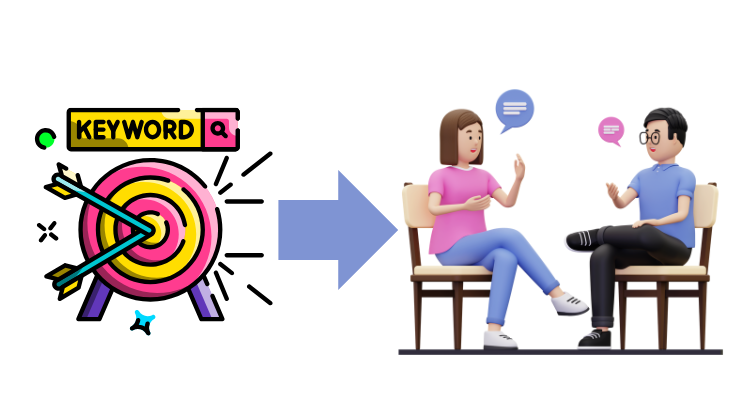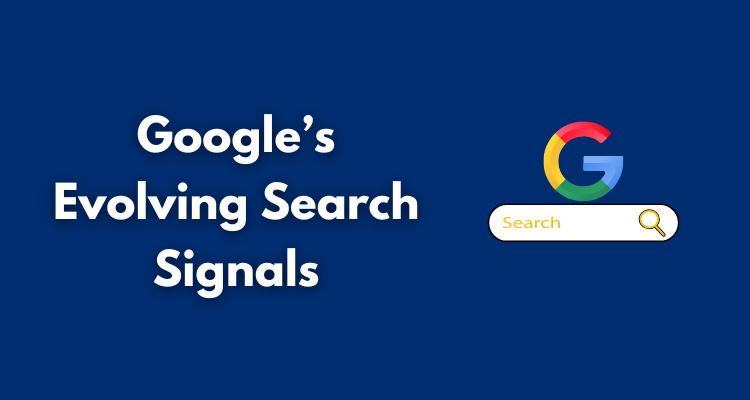It has become more important than ever to try to stay ahead of the game and understand Google’s algorithms in the best way.
The way that SEO works has now completely changed. Your knowledge of what SEO once was is now obsolete. This is why you need to keep learning so that you can stay ahead of the curve and actually be able to engage the audience.
At a point in time, keyword stuffing could actually work for you. But that is no longer the case. Customers now understand when something doesn’t read naturally. The content loses its power when keywords are stuffed in.
It is more important than ever to understand the importance of saying what is relevant to make sure the users stay engaged and to also make sure that your words hold value and are crucial. This can be a huge roadblock for content creators who are always striving to make their content relevant.
Let’s take something as simple as meta descriptions. They are seemingly only short snippets that the users tend to see when they use search engines. But they hold more value than ever. While these are keyword-focused, it is more crucial than ever to make sure that they follow certain guidelines.
For example, the length has to fall within a certain range for it to actually be able to do the job for you. For this, you can use a meta descriptions length checker to ensure that you stay within the desired character count range.
Table of Contents
ToggleThe Shift from Keywords to Conversations

Some time ago, keyword stuffing was the norm. It also did the job for marketers, but this is no longer the idea. It is important for marketers to have conversations with customers so that they are engaged.
With so much information out there, customers no longer want to be bombarded with more marketing material but want content that actually holds value in one way or another in their lives. That can only happen when marketers focus on actual conversations.
Your content genuinely has to be helpful to the other person. They should be able to understand why you’re saying what you are and what problem that is helping them solve. This is where context comes to hold great value.
You can write 2000 words of well-structured content, but if it doesn’t resonate with the end user, then it fails to serve the purpose. Not only that, but your bounce rate will be very high, enough to show you that you are doing something wrong that is causing issues.
Why Context Dominates

The focus is now on intent as opposed to keywords. If two people are searching for a keyword ‘apple’, then one might be referring to the fruit, while the other might be referring to the tech company. So, the idea is to understand what the user is searching for so that you can provide them with valuable content that actually resonates with what they are looking for.
There is a semantic search evolution now where Google understands synonyms and word clusters. It has become easier to understand what the user is asking and in terms of how matching the information coming up is. Within the larger conversation, the content has to make sense and also has to hold value. Furthermore, there is an overwhelming amount of information now, which has led to saturation to a significant extent. This makes it all the more important to have content that actually holds value instead of content that only saturates the online world more.
Optimizing for Context in 2025 and Beyond

Here are a few ways that you can work on context in your writing to achieve better results.
1. Use Topic Clusters
When writing, try to shift your focus from a narrow keyword to a topic cluster. Think about other topics in the same domain that could actually be relevant so you can write based on that. Your content should hold.
Value in terms of being able to solve real-world problems for the customer and should intrigue them enough. To do this, you can search for related topics and then work on the content accordingly.
2. Think Like a User
Try to shift your focus a bit so you can think like a user. This will help you create relevant content. Think about the issues that they genuinely might be facing or the issues they might need help with.
As a marketer, you might be throwing in too much information that does not really hold value for them. But when you shift gears, you can provide them with content that actually works.
3. Incorporate Structured Data
Try to also have structured data within. This can help enhance visibility greatly through better indexing. Whether it is a product, an article, or an FAQ, the idea is to have data structured in a way that is structured so you can achieve your goals better.
4. Analyze Search Features
You need ample know-how of how Google interprets a user query. Look into sections like Features Snippers and People. Also, ask boxes so you can enhance your understanding of things.
At the heart of content strategy now comes the context in which you are writing. It is key for you to first understand where you stand and then think about how far you can go with your understanding. Think about the metrics that can help you understand this better.
Consider engagement metrics like time on page and bounce rate. You can also consider user feedback to see where you stand. Think about conversion behavior – you have to see if they are actually taking the action that you want them to.
These indicators can tell you if your content is performing the way that you ideally want it to. So think about your content strategy, bearing in mind factors that can help you make it better. This way, you can genuinely engage users in the best way and achieve the goals that you want to achieve as well.









